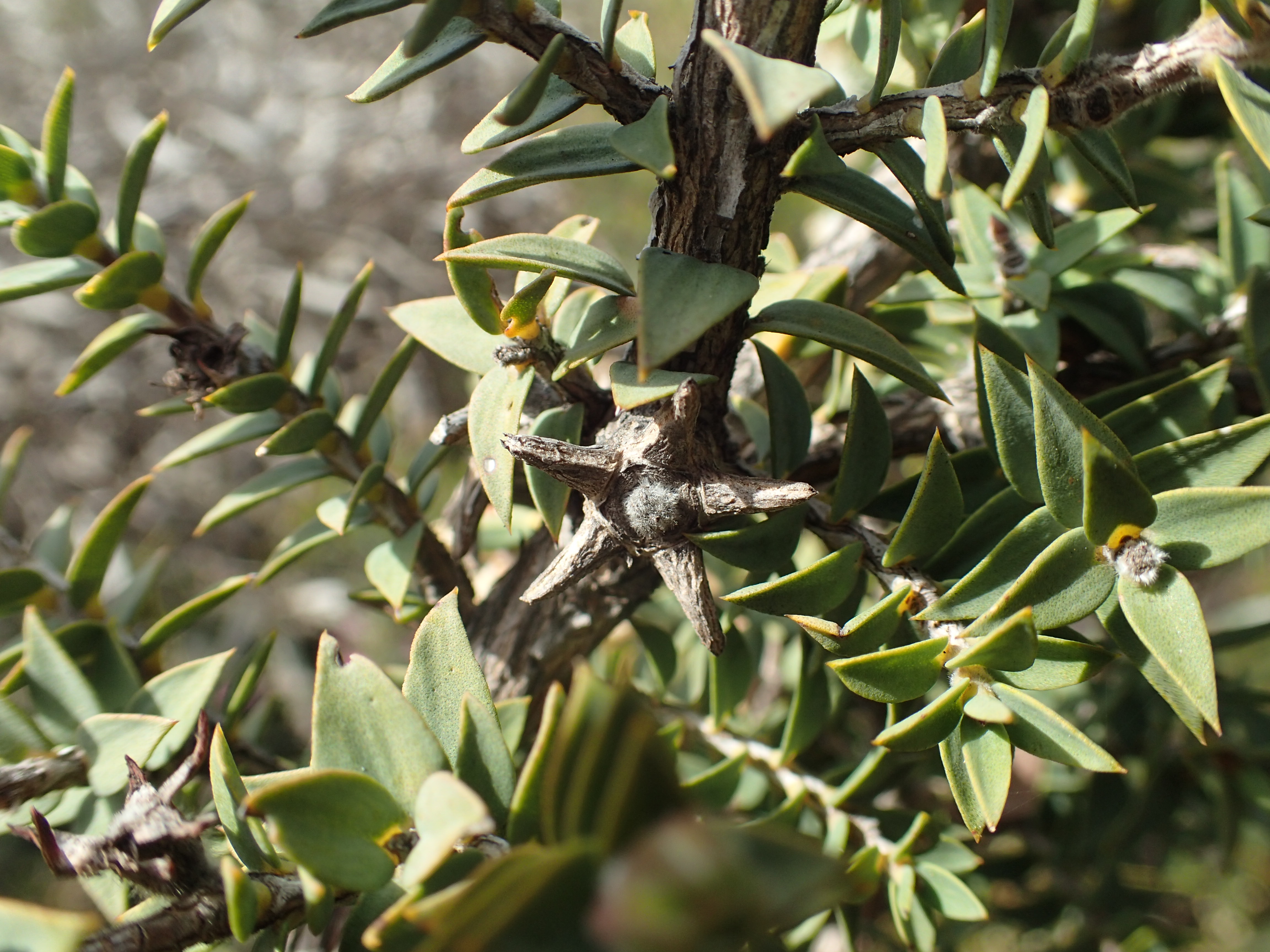Melaleuca Calycina on:
[Wikipedia]
[Google]
[Amazon]
''Melaleuca calycina'' is a shrub in the myrtle family, 

Myrtaceae
Myrtaceae, the myrtle family, is a family of dicotyledonous plants placed within the order Myrtales. Myrtle, pōhutukawa, bay rum tree, clove, guava, acca (feijoa), allspice, and eucalyptus are some notable members of this group. All speci ...
, and is endemic to the south-west of Western Australia. It is a stiff, erect shrub with oval to heart-shaped leaves, white flowers and star-shaped fruit.

Description
''Melaleuca calycina'' grows to a height of about or less and has rough, corky bark. The leaves are long and wide, arranged in alternating opposite pairs (decussate
Decussation is used in biological contexts to describe a crossing (due to the shape of the Roman numeral for ten, an uppercase 'X' (), ). In Latin anatomical terms, the form is used, e.g. .
Similarly, the anatomical term chiasma is named aft ...
).
The flowers are white or cream-coloured and occur singly or in small groups, sometimes at the ends of branches and sometimes in the leaf axils. At the base of each flower there are brown, papery, overlapping bracts. The stamens are arranged in 5 bundles around the flower, each bundle containing 22 to 25 stamens. Flowering occurs from July to October but mostly in September. The fruit are woody capsules long with the sepals remaining as long curved teeth.
Taxonomy and naming
''Melaleuca calycina'' was first formally described in 1812 by Robert Brown in ''Hortus Kewensis
''Hortus Kewensis, or a Catalogue of the Plants Cultivated in the Royal Botanic Garden at Kew'' by William Aiton was a 1789 catalogue of all the plant species then in cultivation at the Royal Botanic Gardens, Kew, which constituted the vast majori ...
''. The specific epithet
In taxonomy, binomial nomenclature ("two-term naming system"), also called nomenclature ("two-name naming system") or binary nomenclature, is a formal system of naming species of living things by giving each a name composed of two parts, bot ...
(''calycina'') is from the Greek ''kalyx'', calyx
Calyx or calyce (plural "calyces"), from the Latin ''calix'' which itself comes from the Ancient Greek ''κάλυξ'' (''kálux'') meaning "husk" or "pod", may refer to:
Biology
* Calyx (anatomy), collective name for several cup-like structures ...
, (collectively the sepals).
Distribution and habitat
This melaleuca occurs from theStirling Range
The Stirling Range or Koikyennuruff is a range of mountains and hills in the Great Southern region of Western Australia, south-east of Perth. It is over wide from west to east, stretching from the highway between Mount Barker and Cranb ...
to Cape Arid in the Coolgardie, Esperance Plains and Mallee biogeographic regions
A biogeographic realm or ecozone is the broadest biogeographic division of Earth's land surface, based on distributional patterns of terrestrial organisms. They are subdivided into bioregions, which are further subdivided into ecoregions.
De ...
. It grows in a wide range of soils on flats, laterite
Laterite is both a soil and a rock type rich in iron and aluminium and is commonly considered to have formed in hot and wet tropical areas. Nearly all laterites are of rusty-red coloration, because of high iron oxide content. They develop by ...
and the edges of swamps.
Conservation status
''Melaleuca calycina'' is listed as "not threatened" by theGovernment of Western Australia
The Government of Western Australia, formally referred to as His Majesty's Government of Western Australia, is the Australian state democratic administrative authority of Western Australia. It is also commonly referred to as the WA Government o ...
Department of Parks and Wildlife
The Department of Parks and Wildlife (DPaW) was the department of the Government of Western Australia responsible for managing lands described in the ''Conservation and Land Management Act 1984'' and implementing the state's conservation and en ...
.
References
{{Taxonbar, from=Q15371094calycina
''Calycina'' is a genus of fungi
A fungus ( : fungi or funguses) is any member of the group of eukaryotic organisms that includes microorganisms such as yeasts and molds, as well as the more familiar mushrooms. These organisms are clas ...
Myrtales of Australia
Rosids of Western Australia
Plants described in 1812
Endemic flora of Western Australia